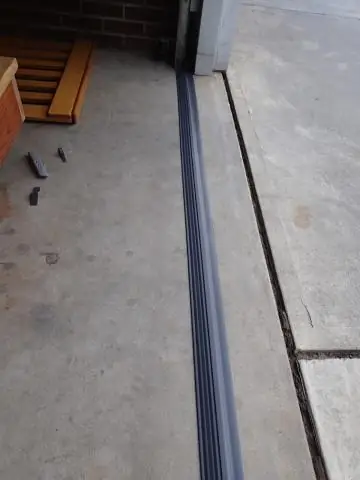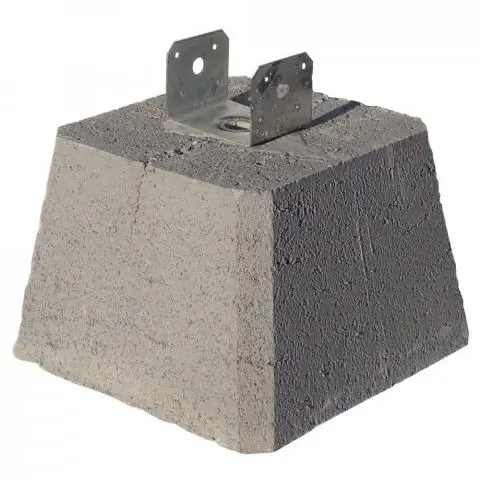
Table of contents:
- Author Bailey Albertson [email protected].
- Public 2023-12-17 12:53.
- Last modified 2025-06-01 07:32.
We insulate the ceiling of the bath correctly

If you decide to build a bathhouse yourself on your site, you will have to thoroughly try to ensure that this structure performs its functions properly. The bath will require a lot of things that a residential building does not need. Today we will talk about how to properly insulate the ceiling of a bathhouse outside and inside so that you really enjoy the result of your work.
Content
- 1 Necessity of work
- 2 Suitable materials
-
3 Details about external insulation
- 3.1 Wet method
- 3.2 Dry method
- 3.3 Mixed version
- 3.4 Modern technologies
- 4 Internal insulation
-
5 Installation
- 5.1 Sauna with a pitched roof, without an attic
- 5.2 Bath with an attic
- 6 Video: an example of warming the ceiling of a bath
The need for work
In a classic Russian bath, all surfaces must be properly insulated, otherwise the structure will be unusable. This applies equally to the ceiling. If you do not provide high-quality thermal insulation, according to the laws of physics, hot steam will be directed upward, cool there and settle on the surface in the form of condensation. During bath procedures, this cold water will drip on top of you, and this is not the most pleasant feeling.

Correctly carried out thermal insulation of the ceiling will provide your bath with an excellent climate
In addition, the dressing room will be constantly cold and damp. The result is the appearance of mold and mildew on surfaces.
If the ceiling insulation is carried out efficiently, then:
- the time required to heat the room is significantly reduced;
- fuel (firewood) is saved;
- heat and steam last longer;
- the service life of such a ceiling, which means the entire bath, increases.
You need to properly plan and carry out all the insulation work in order to ensure a stable indoor microclimate, as well as improve the aesthetic and operational qualities of the room.
Suitable materials
For ceiling insulation, materials of the following types are used:
- leafy;
- free flowing;
- liquid;
- dry.
When choosing a material, pay attention to what the ceiling structure is made of and what is the degree of its wear. These data are the basis of what should be the composition of the heat-insulating "ceiling", and which installation technology should be chosen.
Let's look at the options for thermal insulation materials used for thermal insulation.
-
The most commonly used is classic mineral wool. Between its basalt fibers, there are many air-filled voids that trap heat. The disadvantages include the fact that mineral wool loses its insulating qualities when wet. Therefore, it is very important that the roof is ideally protected from leaks. For this, if necessary, a waterproofing layer is placed over the insulation, leaving a gap between them.

Mineral wool Mineral wool
-
Often a modern material is laid on the ceiling of a bathhouse - penotherm, or super-lightweight foam polypropylene. This material, laminated with foil, was specially developed for the insulation of baths, saunas and other premises for this purpose. It not only insulates: its foil surface, like a mirror, reflects the flow of thermal energy, which reduces the heating time of the room several times.

Penotherm Penotherm insulation
-
Expanded clay is traditionally used in large-sized bath facilities. The layer of expanded clay required for thermal insulation is 30 cm. Although the material itself is quite light, its amount significantly increases the mass of the ceiling structure. Due to its porosity, expanded clay, like mineral wool, is susceptible to moisture, so you will also have to carry out waterproofing.

Expanded clay insulation Warming with expanded clay
-
Since ancient times, clay has been used to insulate baths, including ceilings. The first element of such thermal insulation is a two-centimeter layer of crumpled clay. It can be replaced with a mixture of peat with black soil, shavings filled with cement mortar, a mixture of sawdust, clay and sand. A carpet of dry leaves or sawdust is laid on top of such a layer, after which a layer of dry earth of 15 cm is laid.

Warming with dry leaves Dry leaves are often used for thermal insulation
- Polyfoam is perhaps the most common material for thermal insulation of any surfaces. It is very light both in weight and in operation. Excellent heat retention and moisture resistance. But it also has disadvantages. First, the foam is a flammable material. Secondly, when heated, it releases toxic substances.
- Growing aerated concrete is a novelty among thermal insulation materials. It is non-combustible, has excellent thermal insulation properties and does not load the ceiling structure.
Details about external insulation
Such insulation can be called external only conditionally, since the insulation is located inside the attic. This option optimally solves the problem of heat loss. In this case, the materials that make up the insulation system are not exposed to the aggressive effects of steam and hot air, the risk of condensation formation both on the surface of the ceiling and between the layers of the thermal insulation system is excluded.

External insulation of the ceiling of the bath is carried out from the side of the attic
Before proceeding with the insulation of the ceiling from the outside, thoroughly clean the floor of the attic from debris and dirt. Inspect the ceiling structure for damage, if necessary, carry out repair work and replace damaged elements.
Be sure to treat the surfaces of the base with a primer and antiseptic (if necessary, with mastic) to protect them from the effects of fungus, mold and harmful insects.
There are several ways to insulate a sauna ceiling.
Wet way
Prepare the floor of the attic, which is the outer side of the ceiling, and fill it with the so-called warm mixture. You can buy it ready-made in specialized stores or prepare it yourself. The components that make up such a mixture provide high thermal insulation properties:
- expanded clay;
- foam crumb;
- wood waste - sawdust, wood chips, shavings;
- slag.
Begin the installation of the insulation by processing the abutment areas. These are gables, truss system, chimney. After the mixture hardens, cover it with a moisture-proof material - mastic, a special liquid, a film coating.
If you use membrane webs, take care to protect them from mechanical damage.
Such work is very easy to do on your own, this is its advantage. The disadvantages include the fact that it is very difficult to carry out dismantling work if it is necessary to repair the floors.
Dry method
This option is considered the simplest. You just need to cover the surface of the attic with any bulk materials: slag, vermiculite, expanded clay, woodworking waste. The use of wood waste suggests that you need to carefully coat the chimney junction with moisture-resistant materials.
Sawdust and expanded clay can be poured directly onto the base of the floor or between the logs previously laid on the surface. Lags are needed so that later it would be easier to plan the flooring of sheet material from above, if you plan to lay it.
- The advantages of this method are its simplicity, low cost and the possibility of repeated use of the material. If the sawdust settles during operation, you can add expanded clay or any other "bulk".
- Disadvantages: The filling of the material may be required very often. In addition, when repair work is required, you will have to try to clear the area to the desired state.
Using this method, you can also insulate the ceiling of the bath with mineral wool in slabs or rolls. If you use glass wool for insulation, then keep in mind that you need to provide yourself with personal protective equipment: gloves, overalls, glasses and a respirator or mask. In addition, the mineral wool can be left open, and the glass wool must be closed.
Mixed option
By combining dry and wet technology for installing thermal insulation, you will significantly expand the possibilities of using building materials.
Pre-level the surface, cover it with mineral wool or cover it with expanded clay. Make a moisture-proof screed on top. It can also be mounted on a soft or loose insulation material.
When using this material, do not save on reinforcement, even if you do not plan to operate the attic later.
Modern technologies
In modern construction technologies, fundamentally new materials are used for work:
- ecowool;
- polyurethane foam spraying;
- ceramic thermal insulation;
- polymer thermal insulation.
Experts consider the last two materials to be insufficiently effective.
Insulation in liquid form can be very demanding on storage conditions. If, for example, they freeze, their thermal insulation properties will be lost.
To insulate the ceiling of a bathhouse using polyurethane foam spraying, you need special equipment, so it is rather difficult to cope with such work on your own. In addition, the resulting monolithic structure will be inconvenient if repair work and dismantling are required.
Internal insulation
Before proceeding with the insulation of the sauna ceiling from the inside, carefully prepare the base. Clean it of debris and dirt, level it, repair it if necessary, and be sure to treat it with protective equipment: primer and antiseptics.
Internal thermal insulation has a drawback: there is a risk that moisture will accumulate inside the insulation system. Pay special attention to the choice of material for the finishing. It is best to choose a tree for this: it is environmentally friendly, easy to process, and cheap.
Wood not only absorbs, but also easily releases moisture. Try to fit the lining or boards as tightly as possible, so the ingress of water on the insulation will be prevented.
Due to the fact that wood has high thermal insulation characteristics, the possibility of overheating of the materials that are part of the insulation is excluded.
By the way, lining and boards can be purchased here:
Mounting
As you know, we build a bathhouse in accordance with our desires and capabilities. This means that the building can be with or without an attic. And the process of installing ceiling insulation is significantly different in the first and second cases.

Standard scheme of thermal insulation of the bath ceiling
Sauna with a pitched roof, without an attic
Such a bath also needs insulation. It's easy to make. You just have to sacrifice a few centimeters of the height of the room.
- First tap the boards or planks from the bottom to the existing ceiling. Their thickness will depend on the thickness of the insulation material used, usually from 50 to 100 mm.
- Choose the pitch between the bars in accordance with the width of the layers. This will avoid wasting materials and a large amount of waste.
- Attach the vapor barrier from below to the resulting structure using a stapler. For this, you can use foil materials or wax paper.
-
Now you need to position the insulation mats, for example basalt or mineral wool. If you have chosen a material with low fire-resistant characteristics, mount a box around the chimney pipe and fill it with non-combustible insulation.

Insulation laying Laying heat-insulating mats on a timber structure
- Re-lay the vapor barrier, stapling it to the protruding ceiling elements. Insulate the seams.
-
Proceed to hemming a layer of planed boards. Their thickness can be small, from 25 mm. But if possible, opt for thicker boards to provide additional insulation.

Bath ceiling Insulated ceiling lined with boards
There is another way to insulate a bath ceiling from below. Nail 50 mm thick bars to the ceiling surface, lay a vapor barrier on them, followed by an insulation of the appropriate thickness, and again a vapor barrier layer.
To the resulting "pie" tap more bars 50 mm thick perpendicular to the first layer, again insulation, a layer of foil vapor barrier. This option is more time consuming, but effective.
Bath with an attic
In this case, the task of insulation is simplified. It is much easier to install insulation when there is additional space above the ceiling.
- At the stage of roof construction, lay beams from 10 X 15 cm in size on its walls from the inside, observing a step of 1-1.5 meters. Sew boards 50-60 mm thick to them. These parameters are inconclusive. You can change them depending on the selected materials for insulation.
- Install vapor barrier material.
- Apply a layer of insulation (or lay mats). Subsequently, during operation, regularly check for condensation on the surface of the thermal insulation. If the layer is wet throughout its entire thickness, then it is of little use. You need to either increase it or supplement it with another insulation.
- Pay particular attention to the area around the chimney. There should be used fire-resistant insulation. You can also build a concrete screed over it.
Video: an example of warming the ceiling of a bath
The construction and decoration of the bath, including its insulation, is not an easy job, but it is worth it. After all, you will now have an excellent opportunity to spend your free time with pleasure and benefit for the body. The main thing is to do everything right and not make mistakes. We hope that our tips will help you with this. Share with us your experience or questions on this topic in the comments. Good luck to you!
Recommended:
How And How To Insulate The Garage From The Inside With Your Own Hands - Instructions With Photos And Videos

Self-insulation of the garage. Insulation selection, material calculation and process description
How To Make A Chimney In A Bath With Your Own Hands: Scheme, Device And Calculation, Output Through The Ceiling, Insulation, Step-by-step Guide With Photos And Videos

The chimney in the bath: what is it, why is it needed, what kind of structure it has and how it is made by hand
How To Choose And Build A Foundation For A Bath With Your Own Hands - 4x6, 3x4 And Other Sizes, Tips, Instructions, Photos And Videos

How to make a foundation for a bath with your own hands. Types and features of foundations. The choice of materials and technology, installation rules and step-by-step instructions
How To Insulate A Bath From The Inside With Your Own Hands - Step-by-step Instructions With Photos And Videos

How to calculate and choose material for bath insulation. Insulation of the ceiling from the inside. Features of floor, wall and ceiling insulation in the steam room
How To Insulate The Roof From The Inside In A Private House With Your Own Hands: Step-by-step Instructions With Photos And Videos

How to insulate the roof with your own hands: from the choice of insulation to the rules of installation. Preparation of tools and materials. Complete instructions for roof insulation
